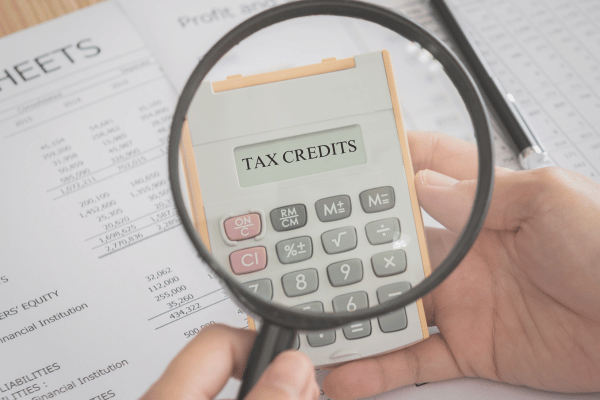Maximizing the Minnesota R&D Tax Credit: A Comprehensive Guide

Are businesses in Minnesota eligible for the Research and Development Tax Credit (R&D Tax Credit)? What makes this tax credit unique in the state of Minnesota? We’ll look into this in this article. We’ll also discuss the eligibility criteria, four-part test, and qualified research activities according to the law.
What are the R&D Tax Credits in Minnesota?

According to Sec. 290.068 MN Statutes, the state of Minnesota offers a tax credit for increasing research activities and a nonrefundable tax credit for all qualifying R&D activities. This credit is 10% of the qualifying expenditures up to $2 million and 2.5% for expenses above $2 million. This tax credit can be carried forward for up to 15 years.
Does Minnesota have an R&D credit?
Yes, according to §290.068 Credit For Increasing Research Activities, Minnesota offers research and development tax credits to eligible taxpayers.
Eligibility Criteria for Minnesota Businesses
According to state law, C-corporations, S-Corporations, LLCs, and Partnerships can apply for this tax credit. In the case of partnerships, the credit shall be allocated in the same manner as provided by Section 41(f)(2) of the Internal Revenue Code. Meanwhile, for shareholders in S corporations, the credit must be allocated in the same manner as provided by section 1366(a) of the Internal Revenue Code.
Four-Part Test for Qualifying Activities
Companies in Minnesota should pass this four-part test to list something as qualified research activities:
Permitted Purposes
The activity must improve or develop a new performance, reliability, composition, quality, or function. It should also intend to develop an enhanced or new software, process, or product. Moreover, the research shouldn’t be done for non-commercial purposes, like art-related or social science research.
Technological in Nature
The activity should rely on physical, biological, computer science, engineering, and scientific methods. This entails using technology or engineering in a science field.
The activity should aim to improve or develop a software, process, or product’s performance, functionality, quality, or reliability.
Elimination of Uncertainty
The activity must aim to discover information and eliminate uncertainty about a particular method or capability for improving or developing a process or product. There is uncertainty if the technique, ability, or design of a software, process, or product isn’t specific or readily known.
The activity must be intended to discover information to eliminate uncertainty concerning a particular method or capability for developing or improving a product or process. Uncertainty exists if the capability, method, or design of the product, process, or software is uncertain or not readily known.
Process of Experimentation
The activity must involve experimentation, which may include evaluating alternatives and confirming the hypothesis through trial and error, simulation, or testing and modeling. It should also involve a systematic process designed to evaluate at least one alternative, including testing one’s hypotheses, modeling, prototyping, and iterative analysis. The activity should also identify uncertainties and test possible solutions.
Calculating the Minnesota R&D Tax Credit

The Minnesota R&D Credit is claimed using Minnesota Form RD, submitted with the annual Minnesota state return. The credit is calculated similarly to the methodology used to calculate the Federal Regular Credit.
To calculate this credit, companies need the following data:
- Claim Period Qualified R&D Expenses (QREs)
- Minnesota Gross Receipts for Prior 4 Years
-
For adjustments: If a taxpayer acquires or disposes of the majority of a trade or business or the majority of a separate unit of a trade or business in a transaction with another taxpayer, the taxpayer’s qualified research expenses and base amount are adjusted in the same manner provided by section 41(f)(3) of the Internal Revenue Code.
The credit is calculated as 10% of QREs more than the base period up to $2M and 2.5% for expenses above $2M. The base period is greater than either a) the average annual gross for the four preceding tax years multiplied by a fixed-base percentage or b) 50% of current year QREs.
Selling or Transferring the Minnesota R&D Tax Credit
No, effective beginning the tax year 2013, the R&D tax credit is non-refundable in the state of Minnesota.
Qualifying Minnesota Research Expenditures
Like in the federal tax credits, the following are recognized as qualifying expenses for this Minnesota tax return:
- Wages paid to individuals involved in research and development activities
- Supplies bought for research and development
- Contract research expenses
How to Claim Minnesota R&D Tax Credits
Qualified nonprofit organizations and businesses should seek the expertise of tax experts with a Minnesota department to ensure compliance with all state rules.
Companies must file IRS Form 6765, Credit for Increasing Research Activities. This process includes identifying qualifying research activities and providing documentation proving these expenses meet the Internal Revenue Code Section 41 requirements. Companies may use business and financial records, oral testimonies, and technical documents.
Before you complete this form, you should familiarize yourself with the instructions mandated by the IRS. The PDF version of this form can be easily downloaded from the IRS website.
In general, the IRS Form 6765 has four sections:
- Section A is used to claim the regular credit and contains 11 lines of required information.
- Section B applies to the Alternative Simplified Credit or ASC.
- Section C identifies additional forms and schedules that require reporting based on one’s business structure.
- Section D only applies to qualified small businesses or QSBs making a payroll tax election.
The IRS recommends that companies calculate their credit using both regular and simplified credit methods, and then they fill out the section (A or B) that would result in the greatest tax benefit.
Benefits of the Minnesota R&D Tax Credit
Companies that file for this credit can reap many benefits, including the following:
- Credit carryover: The state permits businesses to carry forward for up to 15 years any credit amount they cannot claim against Minnesota’s liability for tax in the current year, but it cannot be carried backward.
- Interaction with other state and federal tax incentives: As long as the company has eligible average annual gross receipts, this tax benefit can be filed alongside other state and federal tax incentives.
- Reinvesting tax savings into future R&D projects: Eligible organizations can use the money for additional R&D activities.
Next Steps
If you intend to maximize your R&D tax credit, you need experts that are well-versed in the Minnesota department. Contact our team to start the journey today.